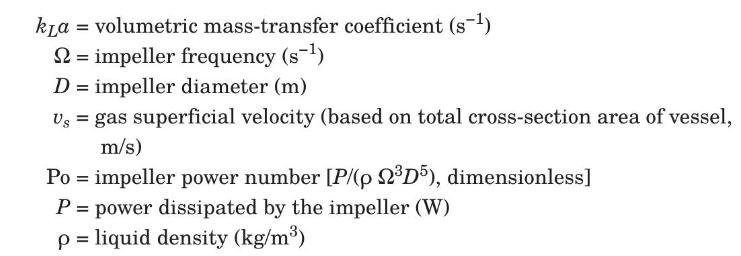The volumetric mass-transfer coefficient, (k_{L} a), is one of the most important transport characteristics used in the
Question:
The volumetric mass-transfer coefficient, \(k_{L} a\), is one of the most important transport characteristics used in the design of mechanically agitated gas-liquid contactors. These apparatuses are frequently used in food and biochemical industries as fermenters and as hydrogenation and chlorination reactors. In these applications liquids often exhibit extremely high viscosities and there is a lack of reliable data for predicting accurate values of \(k_{L} a\). Recently, Labik et al. (2017) performed over 1000 experiments covering a wide range of process conditions under which industrial fermenters handling high-viscosity liquids operate. They proposed the following dimensional correlation for gassed agitated biochemical reactors (with liquid viscosities close to \(10 \mathrm{cP}\) ), independent of the impeller type:

Here

Consider a cylindrical gassed stirred pilot-plant fermenter handling a very viscous batch. The vessel dimensions are \(0.6-\mathrm{m}\) diameter and \(1.8-\mathrm{m}\) height. The fermenter contents are agitated by impellers \(0.2 \mathrm{~m}\) in diameter. The rate of rotation of the impellers is \(360 \mathrm{rpm}\), and the specific power dissipated by them is \(1.0 \mathrm{~kW} / \mathrm{m}^{3}\). The rate of aeration is \(72.0 \mathrm{~L} / \mathrm{min}\). The temperature is kept at \(293 \mathrm{~K}\). At this temperature, the density of the liquid is \(1004 \mathrm{~kg} / \mathrm{m}^{3}\) and its density is \(10.2 \mathrm{cP}\).
(a) Calculate the gas superficial velocity.
(b) Calculate the power number for the impellers.
(c) Estimate the liquid volumetric mass-transfer coefficient.
Step by Step Answer:






